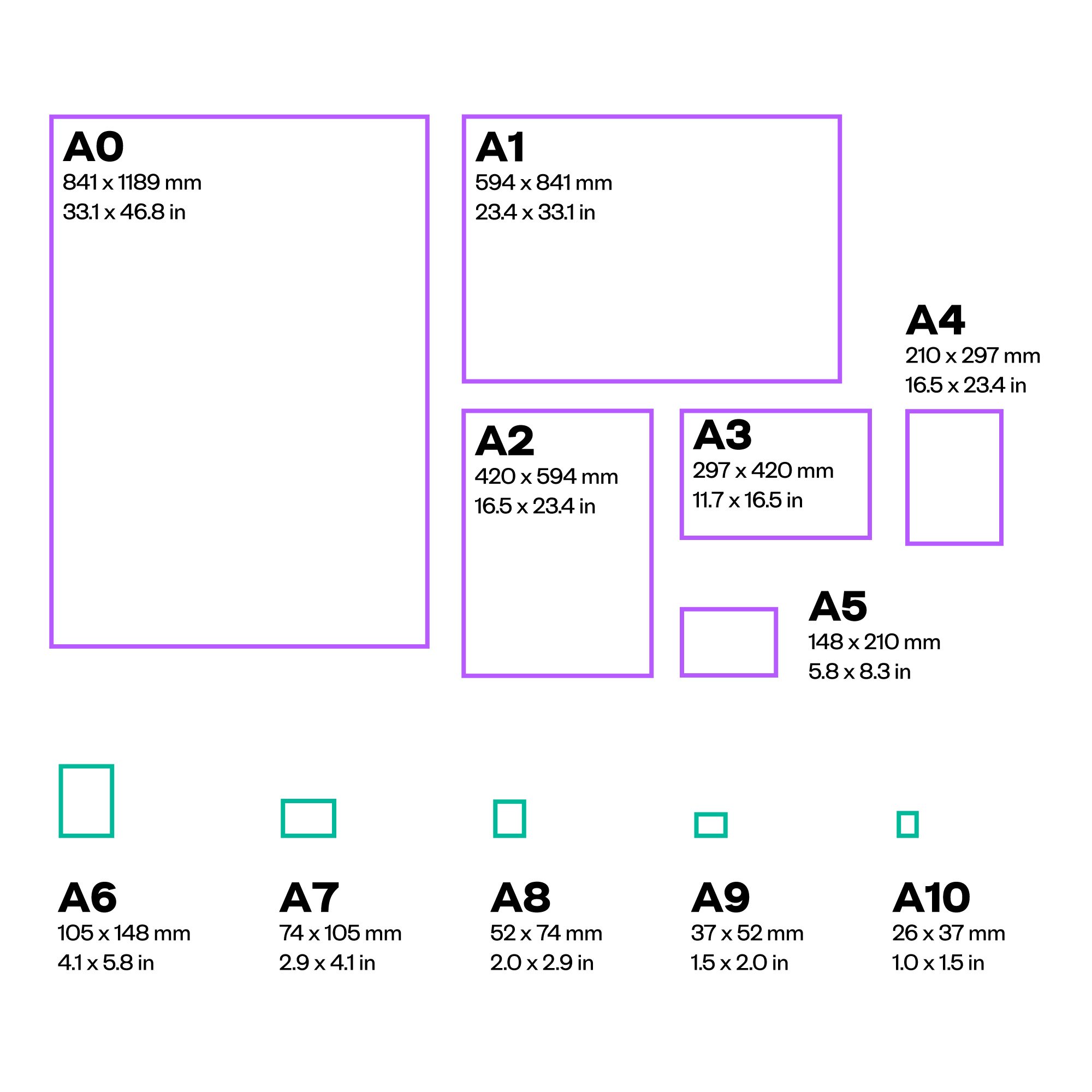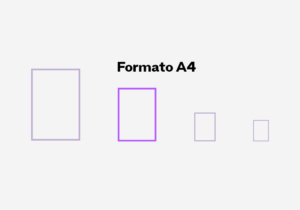A4 size and measurements: everything you need to know
It is the best-known format of all: we are talking about A4 size. A ubiquitous format in our daily lives, it is represented by the classic blank sheet used by home printers and in our offices. Its use is as common as it is varied, and we will soon find out how many and in what ways it is still successfully employed.
But now let’s banish all delay and discover all the features of A4: its actual measurements, its origin, and classic tips for adopting it to the best advantage in your printing.

Happy reading!
A4 format and ISO 216
Even for the A4 format, its dimensions are established by the ISO 216 standard. ISO 216 is nothing but the standard that regulates the paper sizes used in most countries of the world, except for Canada and the United States, which adopt the Letter size. Little trivia: ISO 216 was first adopted in Germany in the 1920s and then gradually expanded.
But the origin of the A4 format is curious and takes us back in time: it is said to have been used as early as the time of the French Revolution, only to be put aside until it re-entered the scene in Germany in the 1920s. As recounted in previous articles referring to paper sizes, the ISO 216 standard derives all other sizes from A0.

The A4 format corresponds to one-sixteenth of the A0 format.
As for its measurements, A4 corresponds to 21.0 cm x 29.7 cm, or 8.3 x 11.7 inches.
While, if we want to refer to measurements in pixels, for printing in 300 dpi quality, an A4 size sheet must contain at least 2480 x 3508 pixels.
Below is the summary table with the dimensions of the series sizes in centimeters, inches, and pixels (for printing in 300 dpi quality).
| Format | Millimeters | Inches | Pixels (printing in 300 dpi quality) |
| A0 | 841 x 1189 | 33 x 47 | 9.933 x 14.043 |
| A1 | 594 x 841 | 23 x 33 | 7.016 x 9.933 |
| A2 | 420 x 594 | 16,5 x 23 | 4.961 x 7.016 |
| A3 | 297 x 420 | 11,5 x 16,5 | 3.508 x 4.961 |
| A4 | 210 x 297 | 8,3 x 11,7 | 2.480 x 3.508 |
| A5 | 148 x 210 | 5,8 x 8,3 | 1.748 x 2.480 |
| A6 | 148 x 105 | 5,8 x 4,1 | 1.240 x 1.748 |
| A7 | 105 x 74 | 4,1 x 2,9 | 874 x 1.240 |
| A8 | 74 x 52 | 2,9 x 2,0 | 614 x 874 |
| A9 | 52 x 37 | 2,0 x 1,5 | 437 x 614 |
| A10 | 37 x 26 | 1,5 x 1,0 | 307 x 437 |
A4 format: what is it used for?
A4 format is widely used because of its size, which is particularly suitable for use in the most diverse of contexts. Just think that it was apparently first devised and used in 1798, during the French Revolution, as a suitable paper medium on which to publish court documents during that turbulent historical period.
A4, because of its size, which is particularly suitable for holding neatly and clearly textual information, is also adopted as the official standard for documents drafted by the UN. During the gradual domestic spread of inkjet printers first, and laser printers later, it became an ever-present item in homes and offices.
Widely used to print documents, forms and letters on it, A4 is also the standard page size of school notebooks and is also frequently adopted by magazines and textbooks. Think, too, that corporate brochures are nothing more than an a4 sheet folded in two or three.

A4 format: the resolution and printing tips
We summarized the measurements of A4 format a few paragraphs earlier.
Making projects by adopting this format is quite simple. You can make booklets, books, magazines, brochures. There are no special precautions for the A4 format, as all software out there adopts it as a standard format for creating documents and projects. After this summary you can get cracking on creating your own A4 documents.
All you need to do is rely on the major publishing software (destktop publishing) and you’re done.
Good work!

